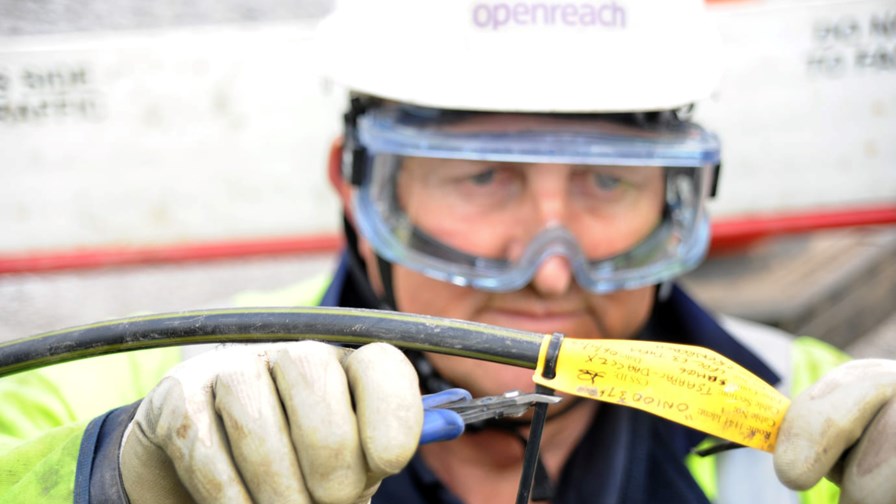
© BT
- The move should clear away one of the key obstructions to a US/UK trade deal
- BT has gone very cloud native and embraced continuous delivery and integration processes
- But BT has also announced a delay in stripping out Huawei kit
After what must have been many months of vigorous lobbying by all the suppliers wanting to fill Huawei’s shoes at BT/EE, the UK telco has chosen Ericsson to deliver the core network infrastructure for its 5G networks.
The announcement follows what seems like years of pressure from the US administration and its intelligence arms to end the participation of Chinese telecoms supplier Huawei on security grounds. The demand to oust Huawei couldn’t have come at a politically worse time for the UK government as it grappled with the EU over the terms of its Brexit from the European union whilst at the same time trying to line up a free trade deal with the US once withdrawal was achieved.
UK operators, particularly BT and Vodafone, had also spent years in close co-operation with Huawei on preparing and planning their networks for the migration to 5G. For its part, Huawei had focused much of its research and development effort on 5G mid-band spectrum and so was well placed to migrate its client telcos in major European markets from the 4G RAN (often its own) to 5G.
Given this, changing suppliers so late in the day was bound to set both those UK networks and the UK 5G effort back considerably.
To placate the security concerns BT had agreed to ban the use of Huawei equipment in the core of its telecoms networks by 2023 and had settled on a limit of 35 per cent for the amount of non-core equipment that could be provided by the Chinese group.
As a result the UK networks would phase Huawei equipment out of the most sensitive parts of their networks.
Enter Ericsson
BT has now revealed its new deployment plans using Ericsson’s infrastructure.
The Swedish company is to deploy its cloud native, container-based Packet Core which will be used for both 4G and 5G ‘non standalone’ networks; and 5G standalone services.
BT is to deploy Ericsson’s dual-mode 5G Core comprising Evolved Packet Core and 5G Core. This is a fully container-based, cloud native Mobile Packet Core for 4G, 5G Non-standalone and 5G Standalone services as a single fully integrated core.
The dual-mode 5G Core will be deployed on BT’s Network Cloud and the new core network functions will form a key part of BT’s converged network strategy, enabling BT to develop 5G use cases with new enterprise and industry partners, it claims.
BT says the network core will incorporate network orchestration and automation, including continuous delivery and integration processes (CI/CD), and will be integrated into BT’s existing customer experience management platforms using Ericsson Expert Analytics together with Ericsson’s built-in software probes.
Cloud native
The containerisation of core network functions will enable BT to tap things like automation, orchestration, network resilience, security and faster upgrade techniques, it claims. It says customers can look forward to improved overall network availability and increased cost-effectiveness. The Ericsson 5G Core will help BT to create and deliver new services such as enhanced mobile broadband, network slicing, mobile edge computing, mission critical vertical industry support and advanced enterprise services.
If external factors, such as US trade and security tensions with China; uncertainty around Brexit, plus political pressure on BT to strain every sinew to acquit itself well in the so-called ‘Race to 5G’ weren’t enough to be going on with, the UK incumbent (along with everyone and everything else) now has to contend with the pestilence of the coronavirus.
The only thing missing from this string of disasters is for the Dutch navy to sail up the Thames and bombard the City of London.
As things stand the Coronavirus may be partly responsible for BT altering the timetable for removing the problematic Huawei kit from the network. It was originally aiming at the end of 2020 but new restrictions on using Huawei kit on the periphery of the network have made that target “logistically unnecessary,” BT CTO Howard Watson told the FT.
But the inherent difficulty of deploying a large number of engineering staff during or soon after the lockdown must also be a factor in BT’s calculations on the timescales for Huawei’s expulsion. Despite the advance of network automation, as far as I know nobody has yet developed kit which can physically disconnect and remove itself from a facility.
************************************
We want to hear from you!
Take part in our 5G and Security survey and receive a free copy of the downloadable report ahead of general release.
Email Newsletters
Sign up to receive TelecomTV's top news and videos, plus exclusive subscriber-only content direct to your inbox.




